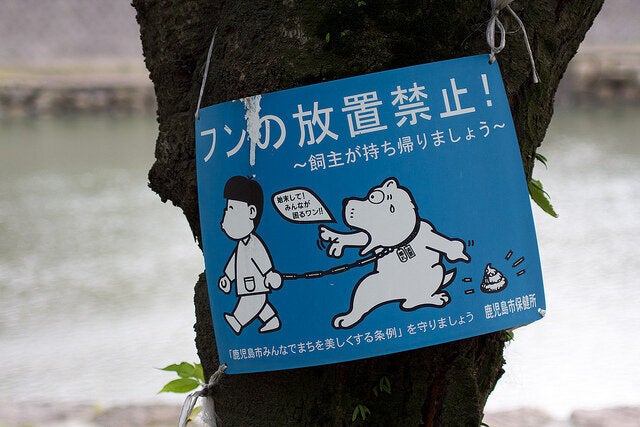If you aren't already into the habit of looking in the toilet before you flush, you might want start doing so today.
Bowel movements, while unpleasant to talk about, are actually one of the best indicators of your overall health. When you go to the doctor, a single stool sample can be used to detect everything from bacterial infections to types of cancer.
Your poo can also tell you about your immune function, stress levels, hydration and nutrition, says Alison Chen, naturopathic doctor and author of "What Your Poo Says About You".
This is because your poo is more than just the digested food you ate during the day. Bowel movements are actually made up of 75 per cent water, with the remaining 25 per cent being a combination of fibre, dead and live bacteria, other cells, and mucus.
Signs of healthy poop go a lot farther than shape and texture. The colour of your stool is also an indicator of health. Healthy poop ranges from light to dark brown and can even occasionally be green.
Any other colours, however, are something to be concerned about. Red stool is most often a sign of bleeding and should be examined immediately, yellow poop is a sign of gallbladder issues, but can also be associated with parasites, says Dr. Chen. White and grey-coloured stool is a sign of liver disease and pancreatic disorder, but can also be representative of antacid use. Finally, black stool can also be a sign of blood, or excessive meat consumption.
Below, Dr. Chen describes twelve types of poo and explains what causes them and how to treat them. So the next time you go, you'll know exactly what your poop is trying to tell you — and how to get the perfect poo.
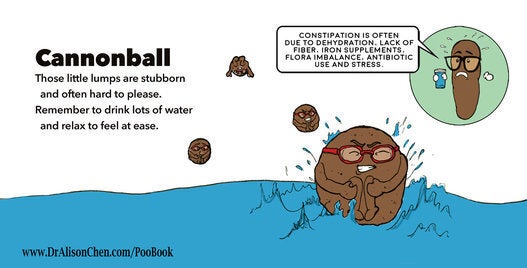
Naturopathic doctor and author of "What Your Poo Says About You," Dr. Alison Chen says cannonball poop, which is formed in small hard lumps, are a sign of dehydration, lack of fibre, electrolyte deficiency, iron supplements, bacteria imbalance, drug use (especially antibiotics) and stress.
To treat these types of poo, increase your water and electrolyte intake, start taking probiotics and give yourself abdominal massages using castor oil.
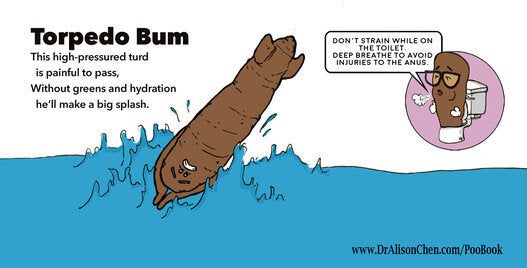
According to Dr. Chen, dry, lumpy sausage-shaped stool is a sign of high fibre intake without adequate hydration. In this case, treatment is simple — start drinking more water.
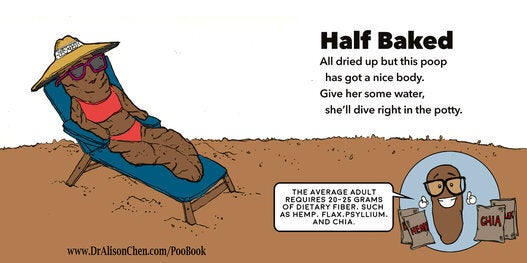
Similar to the torpedo, half-baked poop is a little more moist than the latter, but still requires some strain during the push.
Dr. Chen recommends increasing both fibre and water intake for a more ideal stool.

This stool, which Dr. Chen describes as "soft blobs with clear-cut edges", can be caused by a lack of fibre, gut irritants like hot sauce, a diet too high in sugar and food sensitivities. While this stool is still normal, you can try increasing your fibre intake and avoiding food irritants for a more ideal poop.
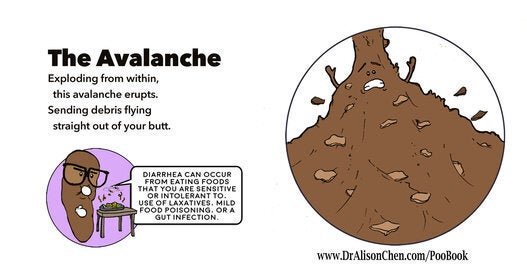
Anyone who's had diarrhea knows this stool all too well. An avalanche can be caused by mild food poisoning, consuming too much artificial sugar, and food intolerance. While suffering from diarrhea, be sure to consume a lot of fluids and avoid the trigger foods mentioned above.
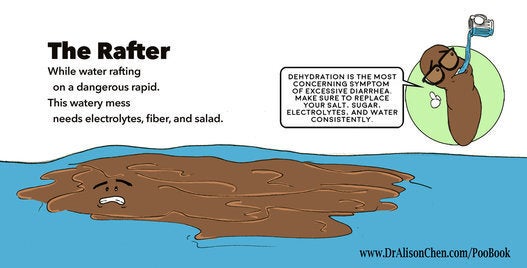
If an avalanche is diarrhea, the rafter is extreme diarrhea. This liquid poo is the result of severe food poisoning, bacterial imbalances, food intolerance and inflammatory bowel diseases.
As with the avalanche, staying hydrated is key. Once the diarrhea has subsided, Dr. Chen recommends eating anti-inflammatory foods and looking into a hypo-allergenic diet.
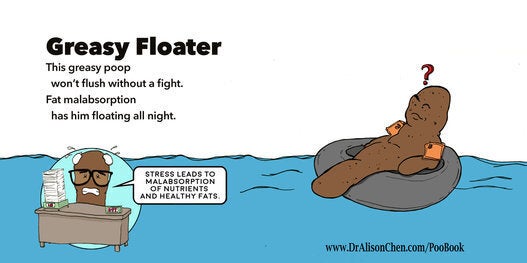
If you've ever flushed the toilet, walked away and then came back to see a lone poop floating in the bowl, you've been witness to the floater. This stool is greasy and can be caused by consumption of drugs, inflammation in the gut and food intolerance. To treat this stool, reduce consumption of inflammatory foods and be careful to chew your food properly.
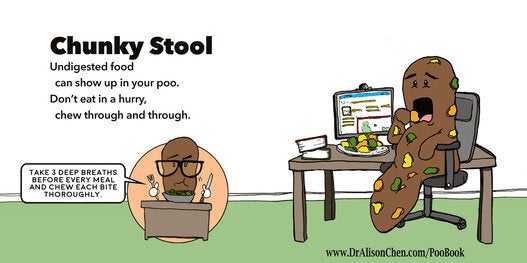
Some foods like corn are difficult for your body to break down, so it's not surprising to see whole kernels in your stool. If you notice other chunks of food in your stool, you might not be chewing correctly. Dr. Chen suggests chewing thoroughly to reduce the likelihood of chunky stool.
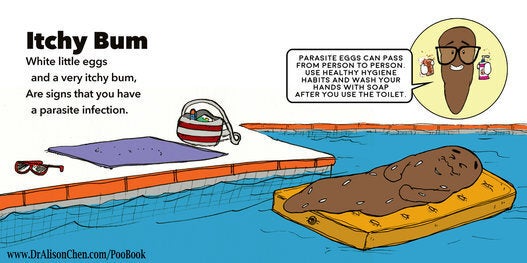
If you notice white spots in your stool and a very itchy backside, you might be experiencing a parasitic infection. Wash your hands thoroughly and check in with your doctor.

Poop should smell, but the odor shouldn't be extremely foul. Dr. Chen suggests consuming probiotics to balance gut flora and get your body back to normal.

If you're in search of the perfect poop, this is it. Mr. Happy stool is soft and smooth and can be shaped like a sausage or snake. It doesn't stick to the toilet bowl and doesn't require a lot of pushing. Dr. Chen says this poo is typically a light to medium brown colour and has a slight odor.
Also on HuffPost
